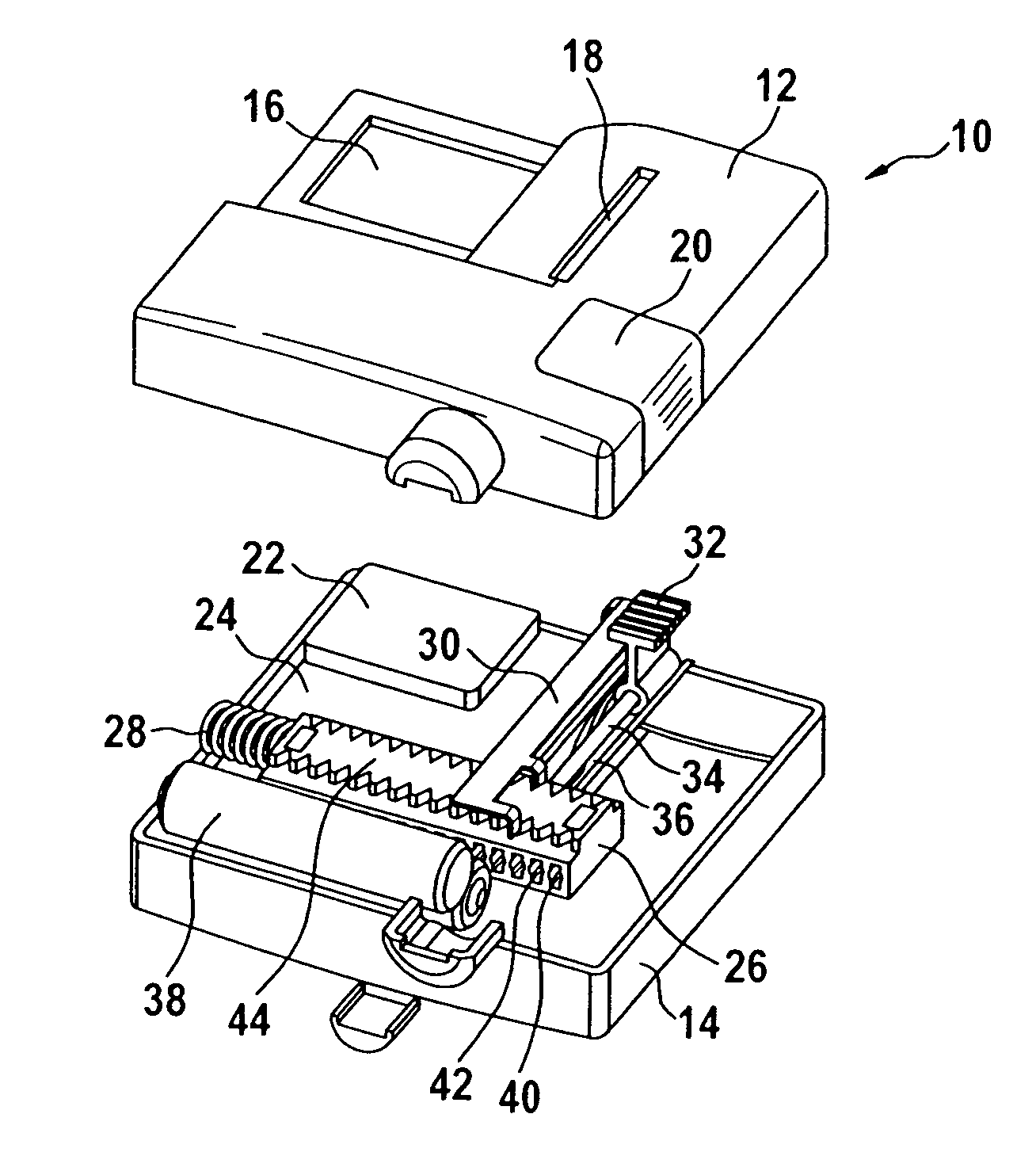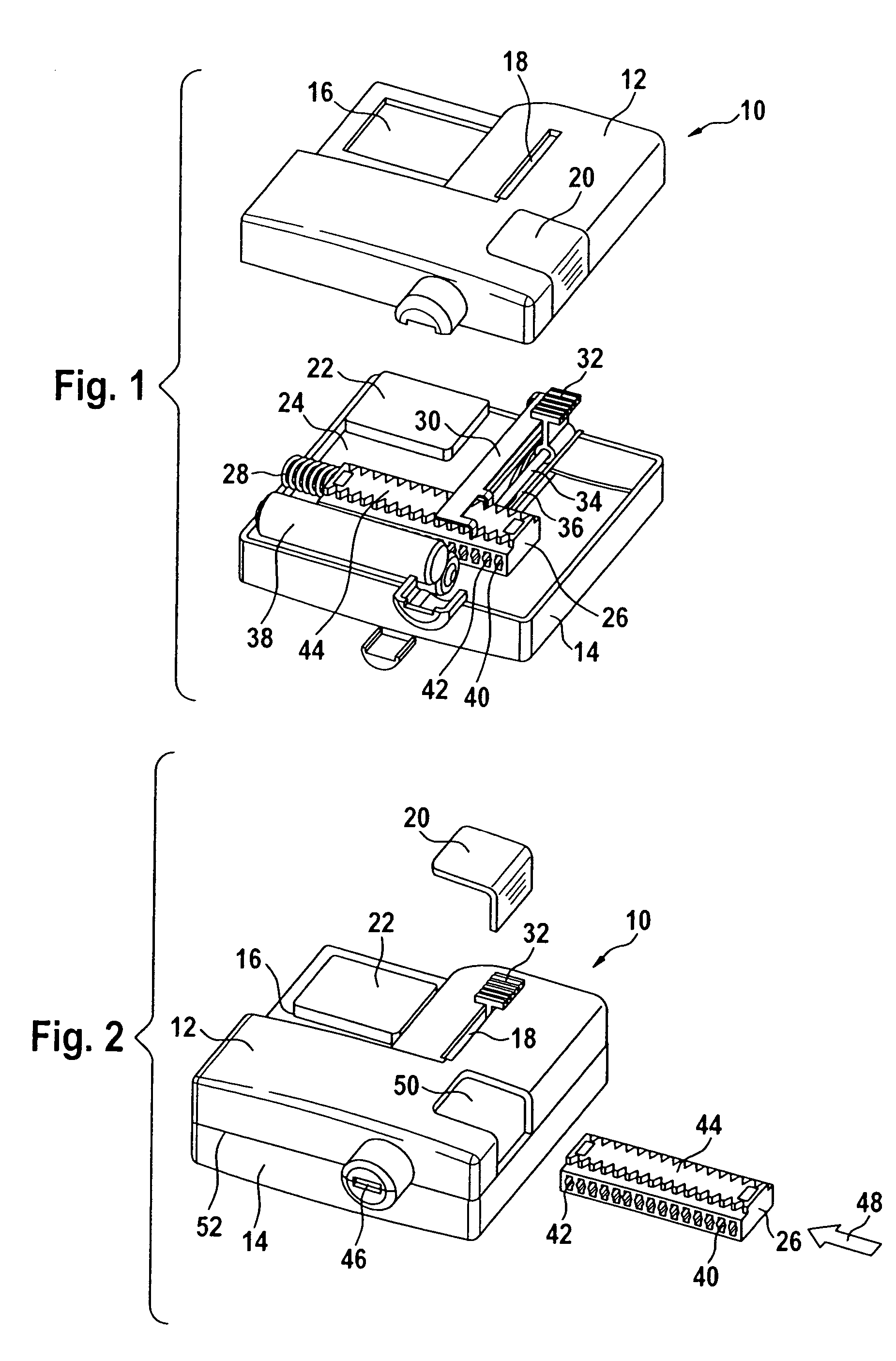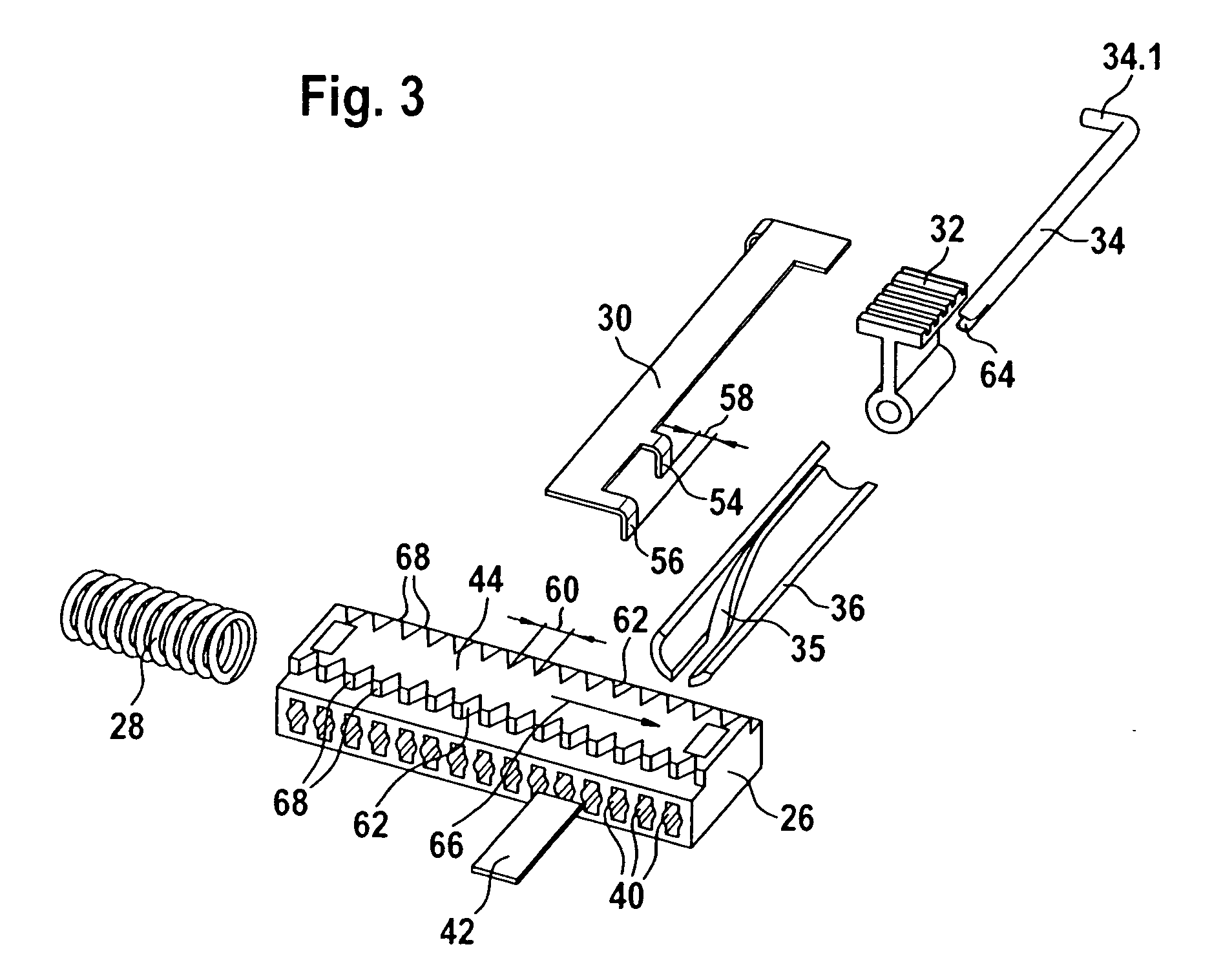Magazine for holding test elements
a technology for medical consumable articles and magazines, applied in the direction of sorting, instruments, suspensions and porous materials, etc., can solve the problems of large volume, high undesirable for the end user, and measurement appliances, and achieve optimal handling and high operating comfort. , the effect of high level of operation
- Summary
- Abstract
- Description
- Claims
- Application Information
AI Technical Summary
Benefits of technology
Problems solved by technology
Method used
Image
Examples
Embodiment Construction
[0033] The embodiments described below are merely exemplary and are not intended to limit the invention to the precise forms disclosed. Instead, the embodiments were selected for description to enable one of ordinary skill in the art to practice the invention.
[0034]FIG. 1 is an exploded view showing a first illustrative embodiment of a portable analysis appliance with a magazine containing test elements.
[0035] In the text that follows, measurement appliances or analysis appliances are understood as portable appliances that a user can carry around on his person at all times. Such transportable measurement appliances or analysis appliances contain a long-term energy accumulator which powers the evaluation electronics contained in the portable measurement appliance or in the portable analysis appliance. Test elements inside the portable measurement or analysis appliance can be evaluated by electrochemical means or also by optical means. In the case of optical evaluation electronics, ...
PUM
 Login to View More
Login to View More Abstract
Description
Claims
Application Information
 Login to View More
Login to View More - R&D
- Intellectual Property
- Life Sciences
- Materials
- Tech Scout
- Unparalleled Data Quality
- Higher Quality Content
- 60% Fewer Hallucinations
Browse by: Latest US Patents, China's latest patents, Technical Efficacy Thesaurus, Application Domain, Technology Topic, Popular Technical Reports.
© 2025 PatSnap. All rights reserved.Legal|Privacy policy|Modern Slavery Act Transparency Statement|Sitemap|About US| Contact US: help@patsnap.com



